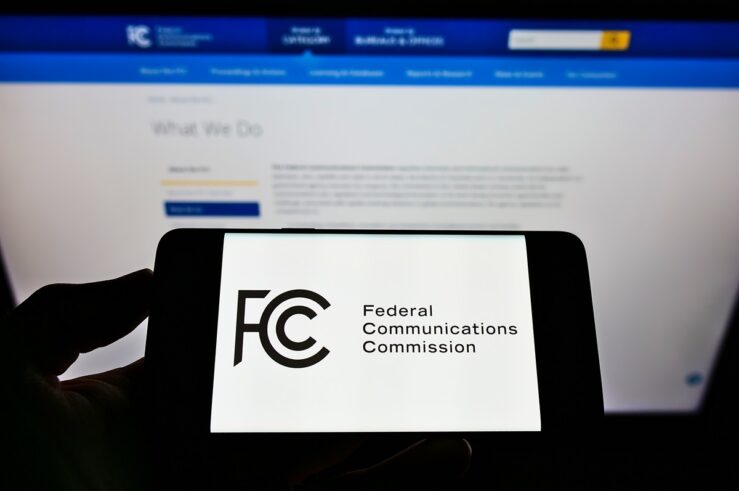
Robust property rights and calibrated regulations have long been key ingredients of the U.S. life-sciences ecosystem, facilitating the development of new drugs that require substantial investments in research, development, and commercialization. Recent legislative proposals, however, threaten to undermine this system under the guise of addressing drug-pricing concerns.
Of particular concern in the current legislative landscape are S. 2780, the Medication Affordability and Patent Integrity Act, and S. 2305, the Biosimilar Red Tape Elimination Act, both of which are currently scheduled to be considered in a Sept. 26 markup session of the U.S. Senate Health, Education, Labor, and Pensions (HELP) Committee. While ostensibly designed to improve drug affordability and bolster market competition, these bills risk disrupting the delicate balance that has made the United States a global leader in pharmaceutical innovation.
S. 2780 proposes new certification and disclosure requirements for pharmaceutical patents that could overburden the U.S. Patent and Trademark Office (USPTO) and potentially expose trade secrets. Similarly, S. 2305 would alter the standards for biosimilar interchangeability, which could have far-reaching consequences for patient safety and future development of biosimilar drugs.
These legislative efforts reflect a misunderstanding of the complex relationship among patent protections, incentives for innovation and commercialization, and drug pricing. They also fail to recognize that the commercialization of inventions is as crucial as the initial discovery, and that well-calibrated regulations and robust patent protection are essential for both components of bringing new drugs to market. Moreover, they overlook both the existing safeguards against abuse by drug developers, and the potential unintended consequences of weakening the incentives and legal protections that facilitate drug commercialization.
Maintaining a strong commercialization system that also protects patient safety is crucial for pharmaceutical innovation, and these proposed legislative interventions are likely to be counterproductive. Congress should focus on strengthening, rather than undermining, the vital drivers of medical progress.
The Role of Patents in Pharmaceutical Innovation
Patents serve as a powerful incentive for pharmaceutical companies to invest in research and development. The U.S. patent system establishes a well-defined system of property rights that encourage firms to internalize the positive externalities associated with innovation. In addition to the obvious benefit of encouraging first-party drug development, another of the key ways the system accomplishes this aim is by enabling a market for firms to transfer or license their intellectual property. This leads to more efficient allocations of resources, as firms with comparative advantages in different stages of drug development and commercialization can specialize and collaborate.
Given the high costs and uncertainties involved in the drug-development process, patents provide a core support to maintain the pharmaceutical industry’s business model. Discovering, developing, and gaining regulatory approval for a new drug is extraordinarily costly and time-consuming, often requiring more than a decade and billions of dollars in investment. Without the promise of patent protection, firms would have little incentive to undertake such risky and expensive ventures.
While much attention is often focused on the initial discovery phase, the commercialization of inventions is equally crucial to bring new drugs to patients. Patents play a vital role in this process by providing the security necessary for firms to invest. This includes not just the well-known costs of conducting clinical trials, but also the difficult tasks of scaling up manufacturing processes, developing distribution networks and, ultimately, marketing approved products.
Patent protections allow pharmaceutical companies to attract the capital needed for each of these activities. Without those protections, the risk of rapid imitation by competitors would significantly reduce the expected return on investment, potentially leading many promising drug candidates to remain undeveloped. Thus, patents provide incentives not only for the initial discovery, but also for ensuring that those discoveries translate into tangible benefits for consumers.
Proposed Regulatory and Patent Changes
Sponsored by Sens. Maggie Hassan (D-N.H.) and Michael Braun (R-Ind.), the Medication Affordability and Patent Integrity Act is premised on the assertion (for which its proponents have fostered no substantial evidence) that there is a widespread problem of pharmaceutical companies systematically deceiving both the USPTO and the U.S. Food and Drug Administration (FDA). It purports to close alleged information gaps between the agencies by introducing new certification and disclosure requirements that would mandate pharmaceutical companies submit additional information to USPTO that was previously only required for FDA submissions. Proponents argue that this will enhance transparency in the patent-application process.
The additional disclosure requirements could, however, have several negative consequences. USPTO already struggles with a significant backlog in applications, and inundating examiners with volumes of additional (often irrelevant) information could further slow the examination process and delay innovation across all innovative sectors.
Moreover, the drug-approval process already requires companies to share highly confidential information with the FDA. Mandating that this information also be shared with USPTO risks public exposure of trade secrets, as USPTO’s standard practice is to disclose information deemed material to patentability. This could undermine companies’ competitive positions and discourage innovation.
Furthermore, the forced disclosure of sensitive information could provide an unintended boost to international competitors, particularly those in countries with less-rigorous intellectual-property protections. This could amount to a transfer of valuable intellectual property to competitors in countries like China, potentially harming the United States’ position as a global leader in pharmaceutical innovation.
The Biosimilar Red Tape Elimination Act, sponsored by Sen. Mike Lee (R-Utah), proposes to streamline the approval process for biosimilar drugs by automatically deeming all FDA-approved biosimilars as interchangeable with their reference products. This would eliminate the current requirement for additional FDA findings to deem biosimilar products interchangeable. While S. 2305’s stated intention is to increase competition and reduce drug prices, it fails to consider several critical factors and could lead to unintended consequences.
The current interchangeability standard exists to ensure that patients can be safely switched between a biosimilar and the reference product without adverse effects. Eliminating this standard could potentially put patient safety at risk, particularly for more complex biologics. Paradoxically, S. 2305 could also limit future biosimilar competition. By removing the distinction between biosimilars and interchangeable biosimilars, the bill would eliminate an incentive for companies to invest in developing biosimilars that meet the higher interchangeability standard.
Furthermore, S. 2305 would tie the FDA’s hands, potentially forcing the agency to either approve a biosimilar as interchangeable or not approve it at all. This could lead to the rejection of biosimilars that might be safe and effective but do not meet the stringent requirements for automatic substitution.
Don’t Break the Patent System
The U.S. patent system, while not without its challenges, has evolved over time to include numerous safeguards against abuse. These existing mechanisms often go unrecognized in debates about patent reform, leading to proposals that risk undermining the system’s effectiveness.
One of the primary safeguards against patent abuse is the rigorous examination process conducted by the USPTO. Patent examiners are tasked with ensuring that applications meet statutory requirements that include novelty, nonobviousness, and usefulness. This process serves as a first line of defense against overly broad or invalid patents. Additionally, the patent system includes post-grant review procedures, such as inter-partes review, which allow third parties to challenge the validity of issued patents. These procedures already provide a means of weeding out patents that should not have been granted, without the need for expensive litigation.
The doctrine of inequitable conduct serves as another crucial safeguard. This legal principle renders a patent unenforceable if it is found that, during the application process, the applicant intentionally failed to disclose to USPTO information that is material to patentablity. The threat of this penalty provides strong incentives for honesty and full disclosure from patent applicants, addressing concerns about potential deception without the need for additional legislation.
The USPTO and FDA play complementary roles in maintaining patent integrity in the pharmaceutical sector. While USPTO focuses on the patentability of inventions, the FDA’s role in drug approvals includes publishing the Orange Book, which lists patents covering approved drugs. This system allows for transparency in patent coverage and facilitates generic competition once patents expire.
The USPTO nonetheless faces significant challenges, including a growing backlog of patent applications and the increasing complexity of inventions being patented. The average pendency for patent applications is currently around two years, with some subject areas facing even longer wait times. Adding even more burdens to the USPTO’s workload risks exacerbating these challenges. Requiring patent examiners to review large volumes of FDA submission data could significantly slow the examination process, potentially delaying innovation across all sectors of the economy.
If Congress genuinely wants to improve the patent system and innovators’ ability to commercialize their inventions, it should consider addressing the eBay v. MercExchange injunction standard, which has made it increasingly difficult for patent holders to enforce their property rights. The 2006 U.S. Supreme Court decision in eBay significantly altered the landscape for patent enforcement by replacing the longstanding presumption in favor of injunctive relief with a four-factor test. This change has made it more challenging for patent owners to obtain injunctions against infringers. As a result, the value and enforceability of patents have been diminished. By legislatively clarifying or modifying the injunction standard, Congress could restore the strength of patent rights, ensuring that inventors and companies have the necessary tools to protect their innovations and recoup their investments in research and development.
Patent Reform Needs to Take Commercialization Seriously
The patent-reform proposals currently before Congress completely fail to consider the downstream commercialization issues they would introduce. The importance of bringing inventions to market cannot be overstated. A groundbreaking discovery confined to a laboratory has limited social benefit. It is only through the process of commercialization that scientific advancements are transformed into tangible products that can improve people’s lives. In the pharmaceutical context, this means translating promising drug candidates into FDA-approved therapies that are made available to patients. This process involves numerous steps beyond the initial discovery, including preclinical testing, clinical trials, regulatory approval, manufacturing scale-up, and market launch.
The commercialization phase is characterized by significant risk and substantial investment. Clinical trials, for instance, are notoriously expensive and have high failure rates. A 2016 study by Joseph DiMasi, Henry Grabowski, and Ronald Hansen estimated the average cost of bringing a new drug to market to be $2.6 billion, with a significant portion of this cost attributed to failures in late-stage clinical trials. Moreover, even after regulatory approval, there’s no guarantee of commercial success. Many drugs fail to recoup their development costs, due to limited market uptake or competition from alternative therapies.
The risks extend beyond financial considerations. Companies investing in commercialization must navigate complex regulatory landscapes, manage large-scale manufacturing processes, and develop effective marketing strategies. Each of these areas presents its own set of challenges and potential pitfalls. The long timelines involved in drug development—often a decade or more from discovery to market—further amplify these risks, as market conditions and medical needs can shift dramatically over this period.
S. 2780 would introduce significant new risks to the commercialization process by potentially exposing trade secrets and confidential information. The drug-development and commercialization process relies heavily on protecting proprietary information, especially during the clinical-trial and regulatory-approval phases. The threat of trade-secret exposure could make it particularly difficult for smaller biotech firms to attract the capital necessary to bring their innovations to market, as these firms often rely on the strength of their intellectual property to secure funding or long-term partnerships with larger pharmaceutical companies.
Furthermore, the additional disclosure requirements that S. 2780 proposes could significantly slow the patent-examination process, introducing delays and uncertainty into the commercialization timeline. These delays could be particularly damaging in an industry in which time to market is crucial. Companies might hesitate to invest in the commercialization of promising drug candidates if they are unsure whether they will be granted patent protection in a timely manner. This uncertainty could lead to fewer drugs brought to market, ultimately harming patients who might have benefited from these innovations.
Additionally, S. 2305 could deter companies from investing in the commercialization of original biologics, as they might fear that their substantial investments could be suddenly and unforeseeably undercut by automatically interchangeable biosimilars. This could produce a chilling effect on investment in the biologics pipeline, as the potential for recoupment becomes increasingly uncertain. Similarly, the Biosimilar Red Tape Elimination Act’s potential to force the FDA to either approve a biosimilar as interchangeable or not approve it at all could lead to the rejection of biosimilars that might be safe and effective, but do not meet the stringent requirements for automatic substitution, thereby further limiting the introduction of beneficial treatments.
Conclusion
The proposed legislative efforts to reform the pharmaceutical-patent system risk undermining the very foundation of innovation that has made the United States a global leader in medical advancements. These pieces of legislation fail to recognize the complex interplay between patent protection, innovation incentives, and the critical process of commercialization. These bills threaten to expose trade secrets, introduce uncertainty into the patent-examination process, and potentially compromise patient safety.
Instead of pursuing these misguided reforms, Congress should focus on strengthening the existing patent system. This could include addressing the eBay v. MercExchange injunction standard to restore the enforceability of patent rights. But more importantly, any changes to the patent system must carefully consider the entire innovation lifecycle, from initial discovery through to commercialization, to ensure that incentives remain in place for the substantial investments required to bring new drugs to market.
Ultimately, a robust patent system is essential to drive pharmaceutical innovation and ensure that groundbreaking discoveries translate into lifesaving therapies for patients. By preserving and enhancing patent protections, rather than weakening them, we can maintain the delicate balance that fosters innovation, attracts investment, and ultimately benefits public health. The path forward lies not in dismantling the system that has served us well, but in thoughtful, targeted improvements that reinforce America’s position at the forefront of medical innovation.





